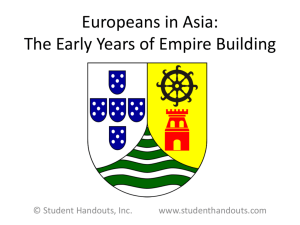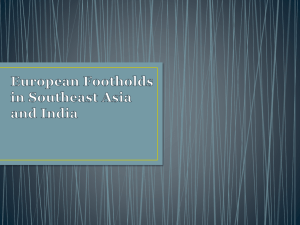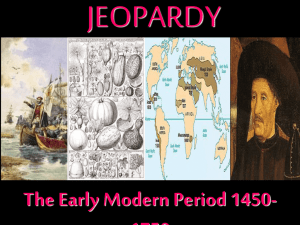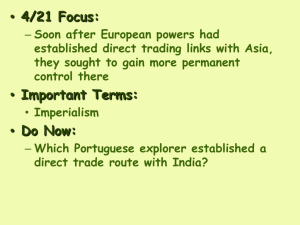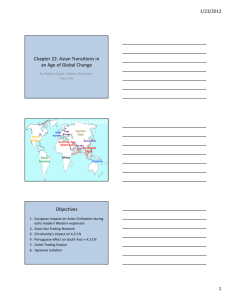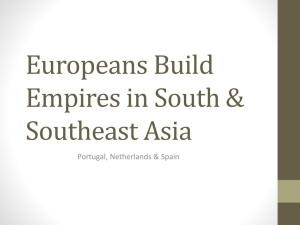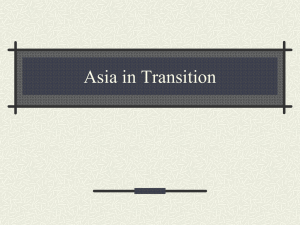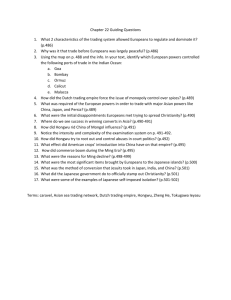page 484-491
advertisement
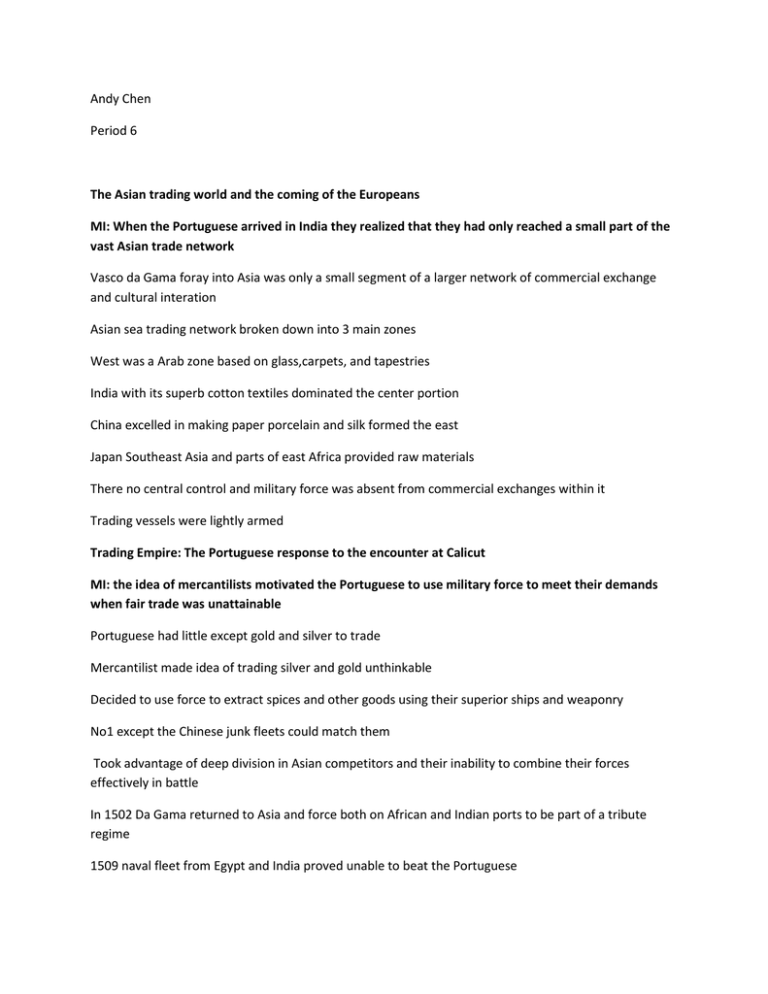
Andy Chen Period 6 The Asian trading world and the coming of the Europeans MI: When the Portuguese arrived in India they realized that they had only reached a small part of the vast Asian trade network Vasco da Gama foray into Asia was only a small segment of a larger network of commercial exchange and cultural interation Asian sea trading network broken down into 3 main zones West was a Arab zone based on glass,carpets, and tapestries India with its superb cotton textiles dominated the center portion China excelled in making paper porcelain and silk formed the east Japan Southeast Asia and parts of east Africa provided raw materials There no central control and military force was absent from commercial exchanges within it Trading vessels were lightly armed Trading Empire: The Portuguese response to the encounter at Calicut MI: the idea of mercantilists motivated the Portuguese to use military force to meet their demands when fair trade was unattainable Portuguese had little except gold and silver to trade Mercantilist made idea of trading silver and gold unthinkable Decided to use force to extract spices and other goods using their superior ships and weaponry No1 except the Chinese junk fleets could match them Took advantage of deep division in Asian competitors and their inability to combine their forces effectively in battle In 1502 Da Gama returned to Asia and force both on African and Indian ports to be part of a tribute regime 1509 naval fleet from Egypt and India proved unable to beat the Portuguese Soon began to build forts in strategic locations Aim of empire was to create a monopoly control over spices such as cinnamon Portuguese vulnerability and the rise of the Dutch and English trading empires MI: While the Portuguese would manage to control the flow of trade for a short amount of time ultimately they would decline due to corruption and heavy loss in shipping. Portuguese for decades control much of the spice flow ex nutmeg and mace Lacked control of peppery and cinnamon Corruption lack of military discipline and resistance of Asians weakened the empire Early 17th century Dutch and English challenged for control Dutch would win Dutch took Malacca and built a new port at Batavia in 1620 on the island of Java Dutch trading empire used same idea as the Portuguese building forts and factories To regulate flow they would uproot other planters crops Demand for spice declined and their effort to control the flow became more expensive Began to depend on fees such as transporting from one area to another Going Ashore: European tribute systems in Asia MI: On the coast and areas around it the Europeans were able to dominate using their ships and cannons but further inland the natives would dominate. As the Europeans moved inland their military advantages and ability to dominate Asians disappeared rapidly Huge Asian armies offset the European advantages in weaponry Dutch felt compelled to to conquer coastal areas of Ceylon to control sale of cinnamon Later on moved into the highlands of western Java was ideal for growing coffee In each area that the Europeans went ashore on they set up tribute regimes Overlords were content to let the indigenous people live in their traditional settlements Tribute payed in forms of agriculture products Spreading the Faith: the missionary Enterprise in South and Southeast Asia MI: Protestant Dutch and English were doing little to win converts but in mainly isolated area conversion was wide spread Dutch and English had little interest in winning converts In many parts of Africa and India Islam or Hinduism was already deeply entrenched Francis Xavier were willing to minister to the poor and low caste people These missions made little head way with the higher class caste group Robert di Nobili decided to learn Hindu language and customs but it seemed he was converted instead High caste members unwilling to pray with the lower poor class people In the Philipines the Spanish had success in conversion with converting of local leaders who would then convert their followers

